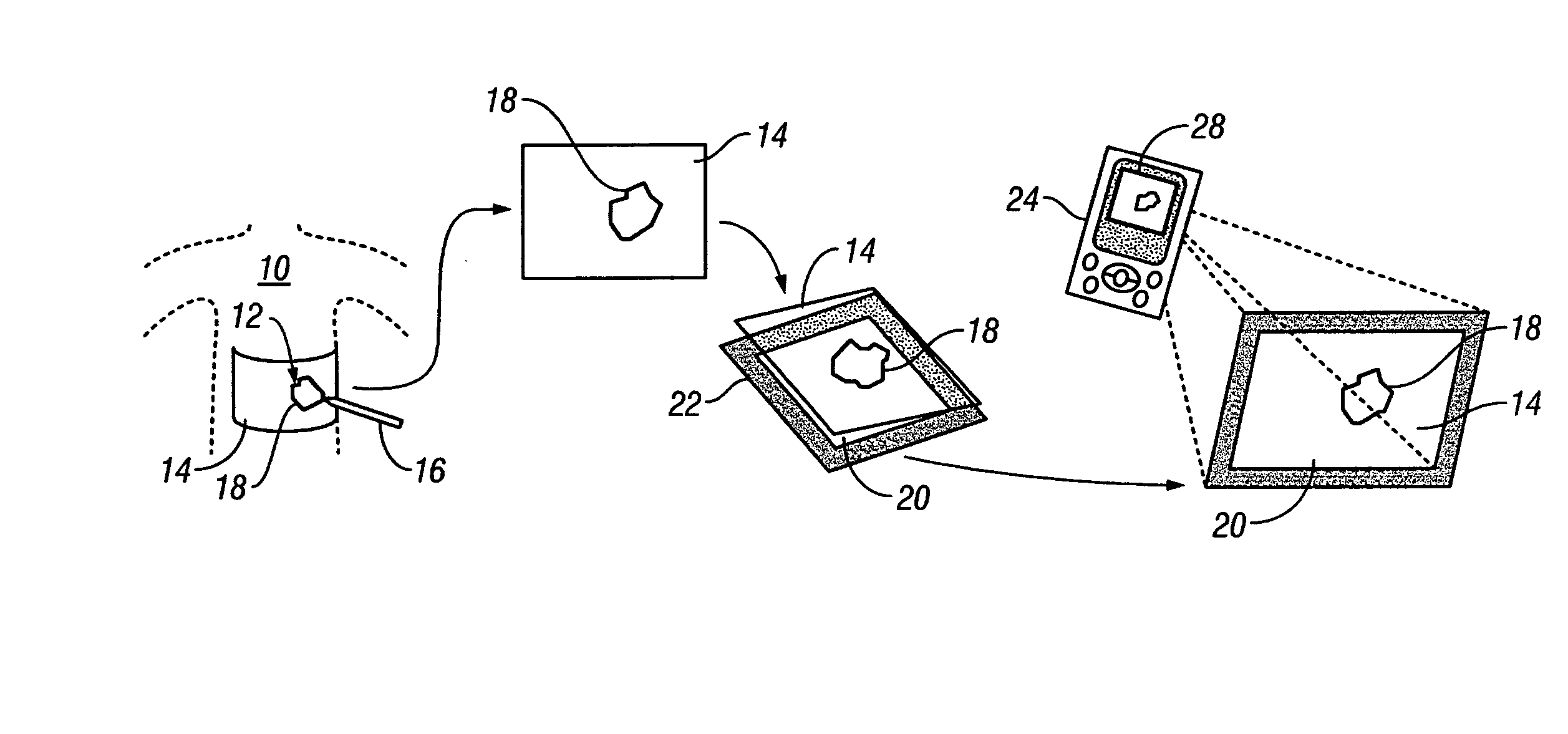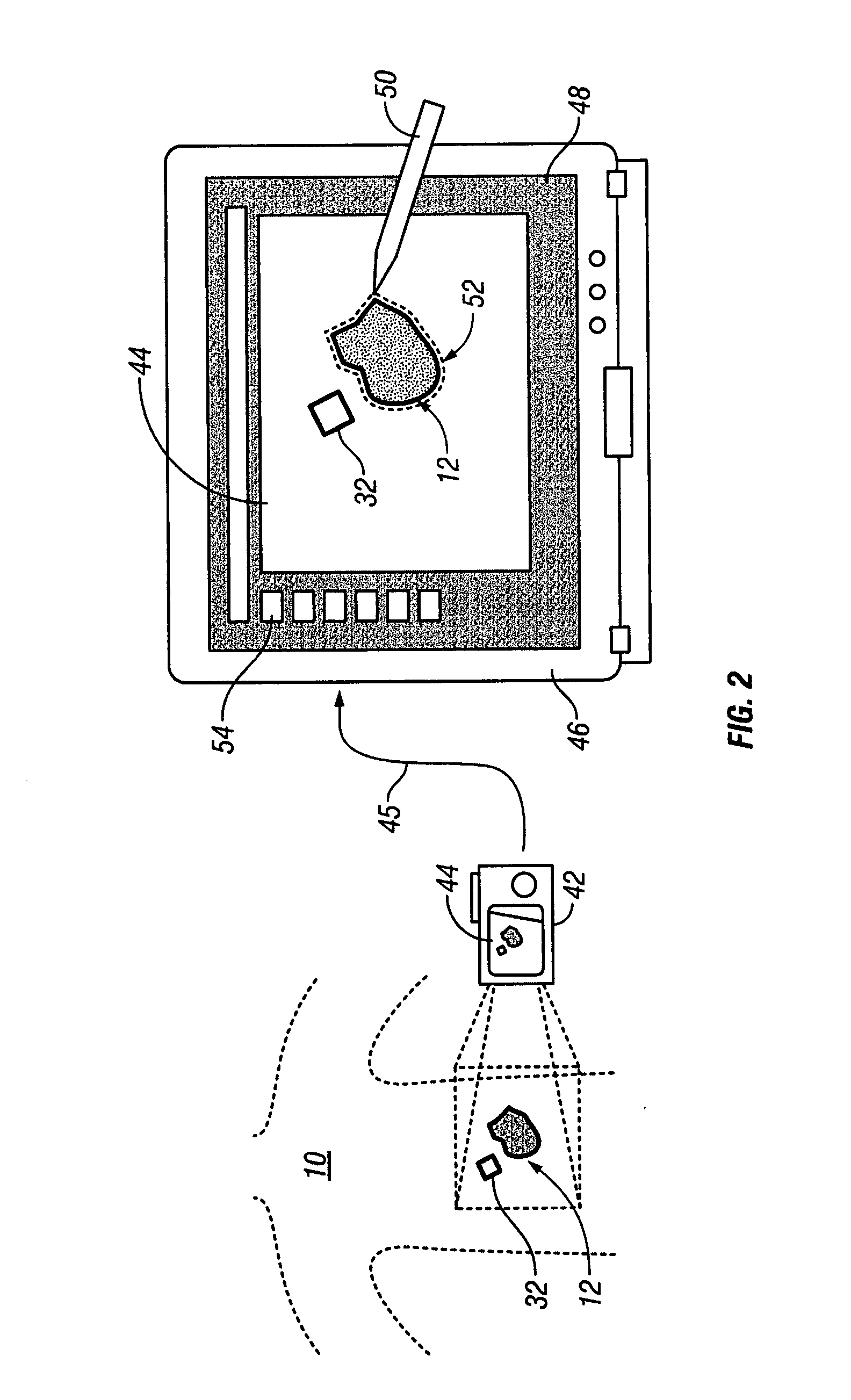System and method for tracking healing progress of a wound
a technology of system and method, applied in the field of system and method for tracking the healing progress of wounds, can solve the problems of inability to provide the necessary information to health care providers, inability to measure and track changes in the size of wounds, and limited wound size measurable with such systems,
- Summary
- Abstract
- Description
- Claims
- Application Information
AI Technical Summary
Benefits of technology
Problems solved by technology
Method used
Image
Examples
first embodiment
[0033] Reference is first made to FIG. 1 for a brief description of the specific components required within a system of a first embodiment for implementing a methodology in accordance with the principles of the invention. In general, the system involves the use of a transparent or translucent film positioned on the patient over the wound site onto which an outline trace of the wound perimeter is made with a permanent felt tip pen or the like. This transparent or translucent film bearing the wound trace is then positioned on a rectangular template frame, which in one embodiment, comprises a white background surrounded by a wide black band (frame). A clinician may then use a preprogrammed handheld digital processor and digital camera device (a PDA fitted with a camera, for example) to capture an image of the film / template assembly. Processing software programmed in the device identifies and quantifies the wound trace and the surrounding frame (as a reference) in order to calculate a w...
second embodiment
[0065] For a discussion of the methods of the present invention, reference is now made to FIGS. 7A and 7B. These flowchart diagrams show the steps associated with acquiring (FIG. 7A) and processing (FIG. 7B) the wound trace data. FIG. 7A shows the initial process of acquiring the wound image and then a wound trace sufficient for digital processing. Image acquisition methodology 140 is initiated at Step 142 where the caregiver may visually inspect the wound and place an appropriate reference marker adjacent to or within the wound. At Step 144, the clinician positions the digital imaging device (the digital camera) and confirms that view covers wound sections of concern as well as the reference marker. At Step 146, the clinician then captures the digital image of the wound site with the digital imaging device. The technician / clinician then transfers the digital image data to the tablet PC device at Step 148 according to any of the various methods discussed above.
[0066] At Step 150, th...
PUM
 Login to View More
Login to View More Abstract
Description
Claims
Application Information
 Login to View More
Login to View More - R&D
- Intellectual Property
- Life Sciences
- Materials
- Tech Scout
- Unparalleled Data Quality
- Higher Quality Content
- 60% Fewer Hallucinations
Browse by: Latest US Patents, China's latest patents, Technical Efficacy Thesaurus, Application Domain, Technology Topic, Popular Technical Reports.
© 2025 PatSnap. All rights reserved.Legal|Privacy policy|Modern Slavery Act Transparency Statement|Sitemap|About US| Contact US: help@patsnap.com



